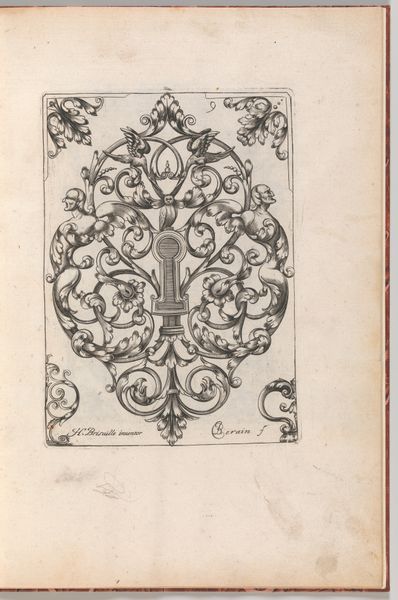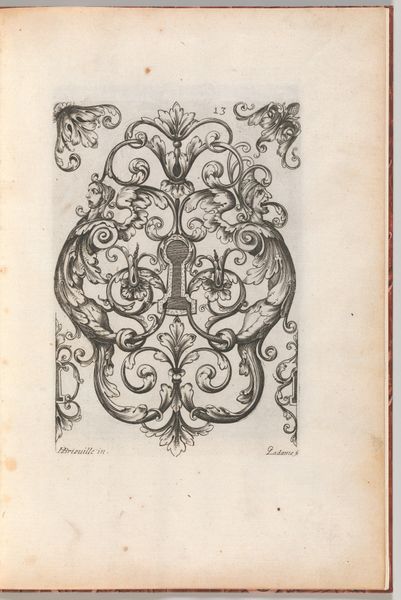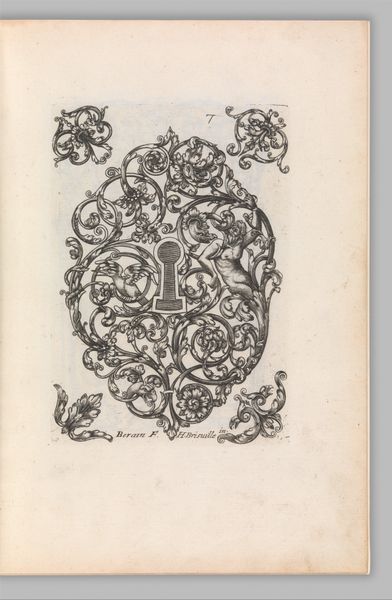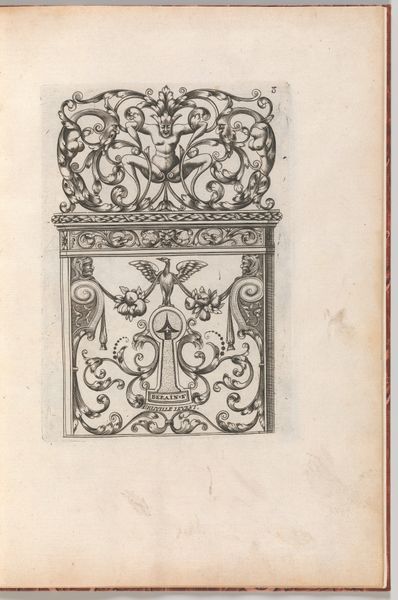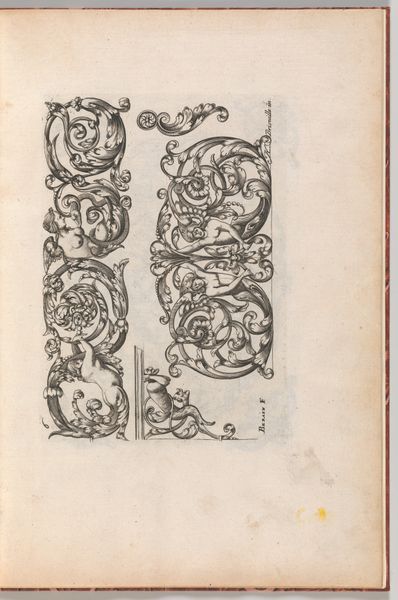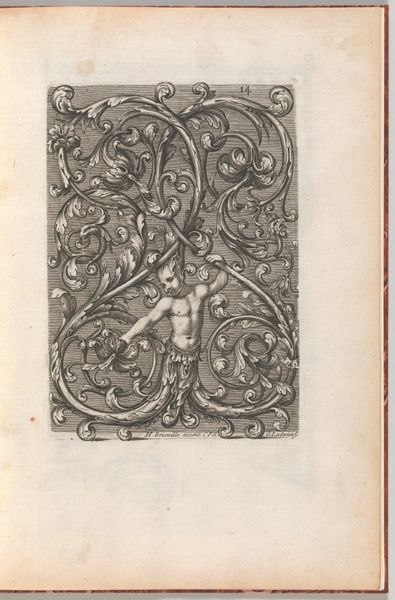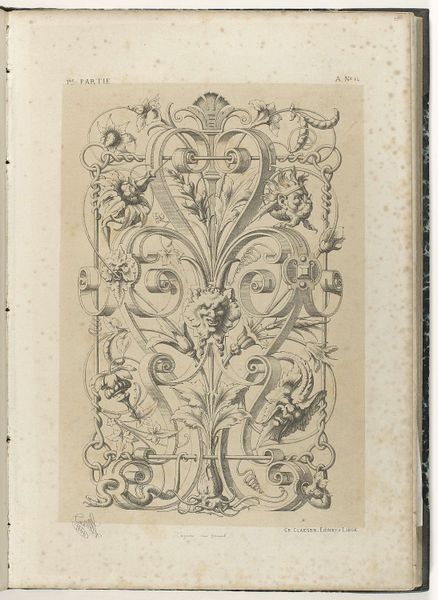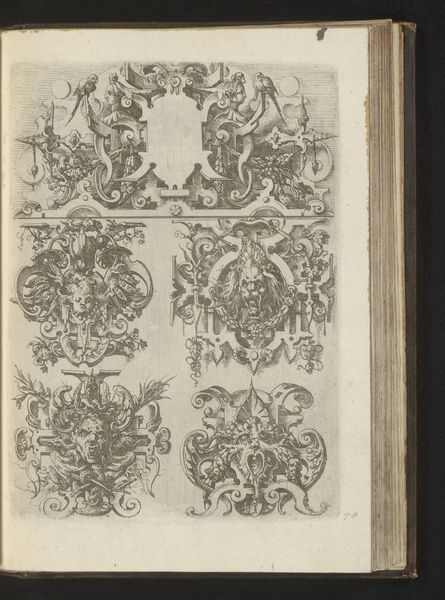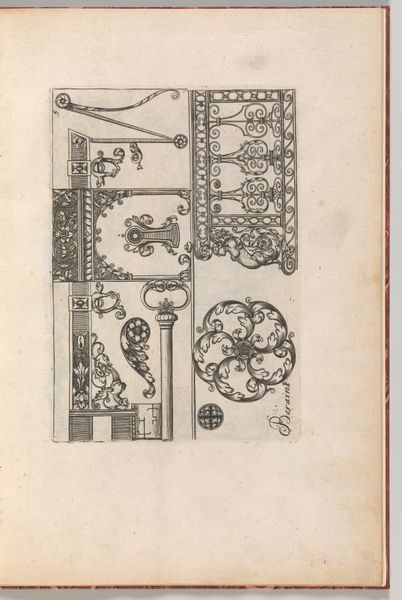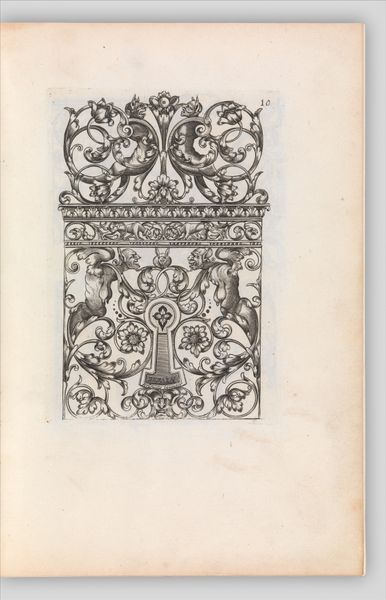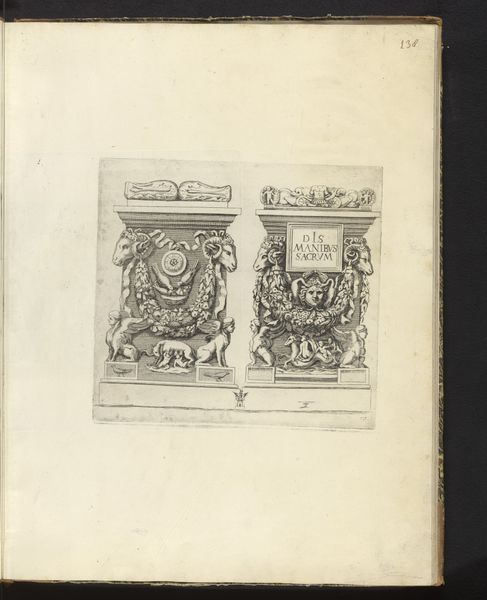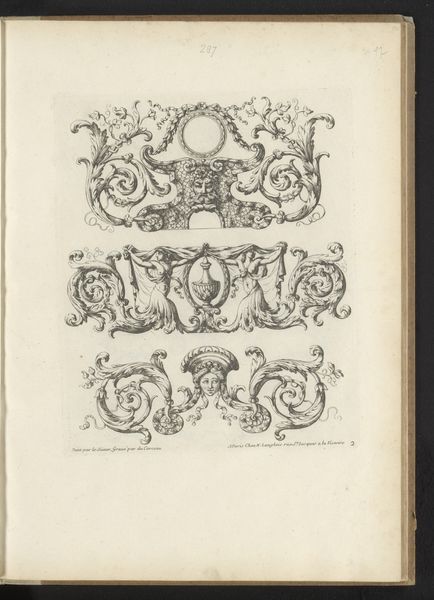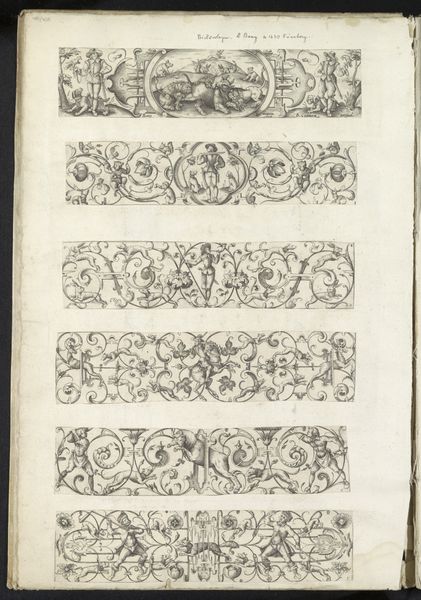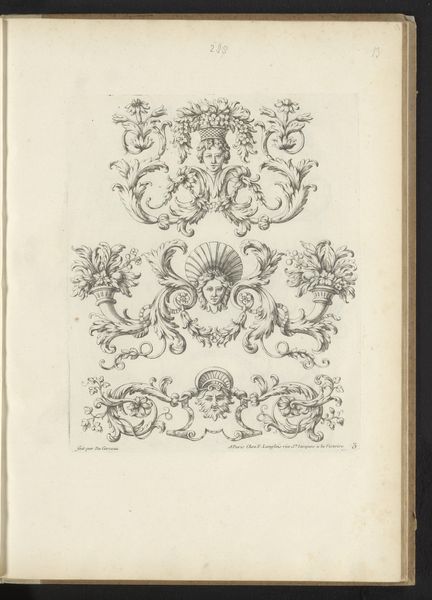
Diverses Pieces de Serruriers, page 13 (recto) 1658 - 1668
0:00
0:00
drawing, print, intaglio, engraving
#
drawing
#
baroque
# print
#
intaglio
#
figuration
#
engraving
Dimensions: Sheet: 10 13/16 × 7 5/16 in. (27.5 × 18.5 cm) Plate: 6 11/16 × 4 3/4 in. (17 × 12 cm)
Copyright: Public Domain
Editor: Here we have Jean Berain's "Diverses Pieces de Serruriers, page 13," an engraving dating from the late 17th century. I find the contrast between the rigid geometric frame and the flowing, organic interior quite striking. What's your take on the overall design, and how might you dissect its individual elements? Curator: Indeed. Observe how the composition is carefully structured into distinct registers, each showcasing a different iteration of ornamental motifs. The top section, dominated by curvilinear scrolls and the suggestion of figuration, contrasts with the more geometric abstraction below. The interplay of line, negative space, and repetition generates a visual rhythm that characterizes much of Baroque design. Notice how Berain uses the intaglio technique to achieve varying tonal depths and precise detailing in his drawing. Editor: That's fascinating. Is there a theoretical lens through which we can understand the relationships between the different registers and their patterns? Curator: Semiotically, the juxtaposition could represent the dynamic tension between the natural world and human artistry. The scrolling foliate designs, in contrast to the symmetrical forms, manifest dual aspects in 17th century thought. Furthermore, considering its potential function as a locksmith’s model book, these pieces were likely intended as modular elements that smiths could rearrange. Editor: So the print is both a finalized design and an array of possible futures. Thank you, I now better appreciate the layers of structure embedded within what I had originally perceived as pure decoration. Curator: Precisely. And, in appreciating such layered designs, we begin to decode the underlying visual syntax and philosophy informing this aesthetic tradition.
Comments
No comments
Be the first to comment and join the conversation on the ultimate creative platform.
